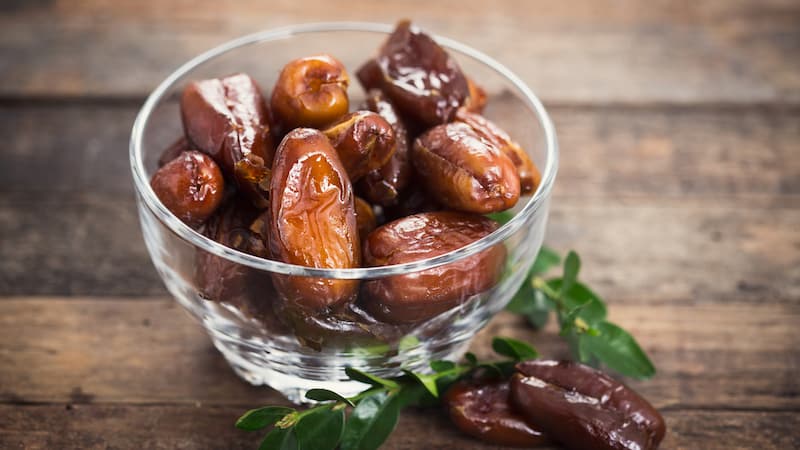Dates for Health – The Edible Kind
This Mediterranean fruit is packed with nutrients

Pop some dates for health – this popular nutrient-rich sweet gem is as nutritious as it is delicious.
The folklore
Date fruit, one of the oldest cultivated tree crops, is believed to have originated around the Persian Gulf. Domesticated more than 5,000 years ago, this staple in the Mediterranean was known as the “bread of the desert” for its abundance, stability, and quick source of energy among early hunters and gatherers and, later, desert travelers.
The facts
Date fruit, Phoenix dactylifera, gets its species name, dactylifera, from the Greek word for finger due to its finger-like shape. There are more than a hundred varieties of dates, which are categorized as soft, semi-dry, and dry. The smooth flesh ranges from bright red to yellow and turns dark brown as it ripens and sun-dries. It surrounds a long, hard pit.
Naturally low in moisture, fresh dates are commonly mistaken as dried because they are less than 30% moisture (most fruits are 75-95%), with a nutritious concentration of nutrients. One serving – about 5 to 6 dates – packs 12% daily value (DV) of dietary fiber, 8% of heart healthy potassium and a host of protective antioxidants.
The findings on dates for health
Dates host antioxidants, at least 15 minerals, 23 types of amino acids, at least six vitamins, up to more than 11% dietary fiber, and a diverse set of plant chemicals. Research suggests the potential of date fruit and extract intake to be a useful part of a healthy lifestyle and benefit vascular health (International Journal of Molecular Sciences, 2021).
Though dates contain more than 70% sugar, a study in the journal Nutrients (2020) found that dates may be useful in lowering total cholesterol and elevating HDL, while not impacting glucose levels in people with Type 2 diabetes.
5 Easy Eating Habits for a Healthy Gut
The finer points
Fresh dates are available September through May, though their peak is in November. Choose plump fruits with smooth, shiny skin and even color. Because dates are naturally low in moisture, they have a longer shelf life than other fruits – up to 12 months refrigerated in an air-tight container. Store dried dates in a cool, dark place, or refrigerated up to a year and a half. Enjoy dates stuffed with soft cheeses and nuts, chopped and added to savory pilafs and sweet quick breads or muffins, or sprinkled into a bowl of oatmeal or granola.
Reprinted with permission from Environmental Nutrition, a monthly publication of Belvoir Media Group, LLC. 800-829-5384. www.EnvironmentalNutrition.com.
©2023 Belvoir Media Group. Distributed by Tribune Content Agency, LLC.


